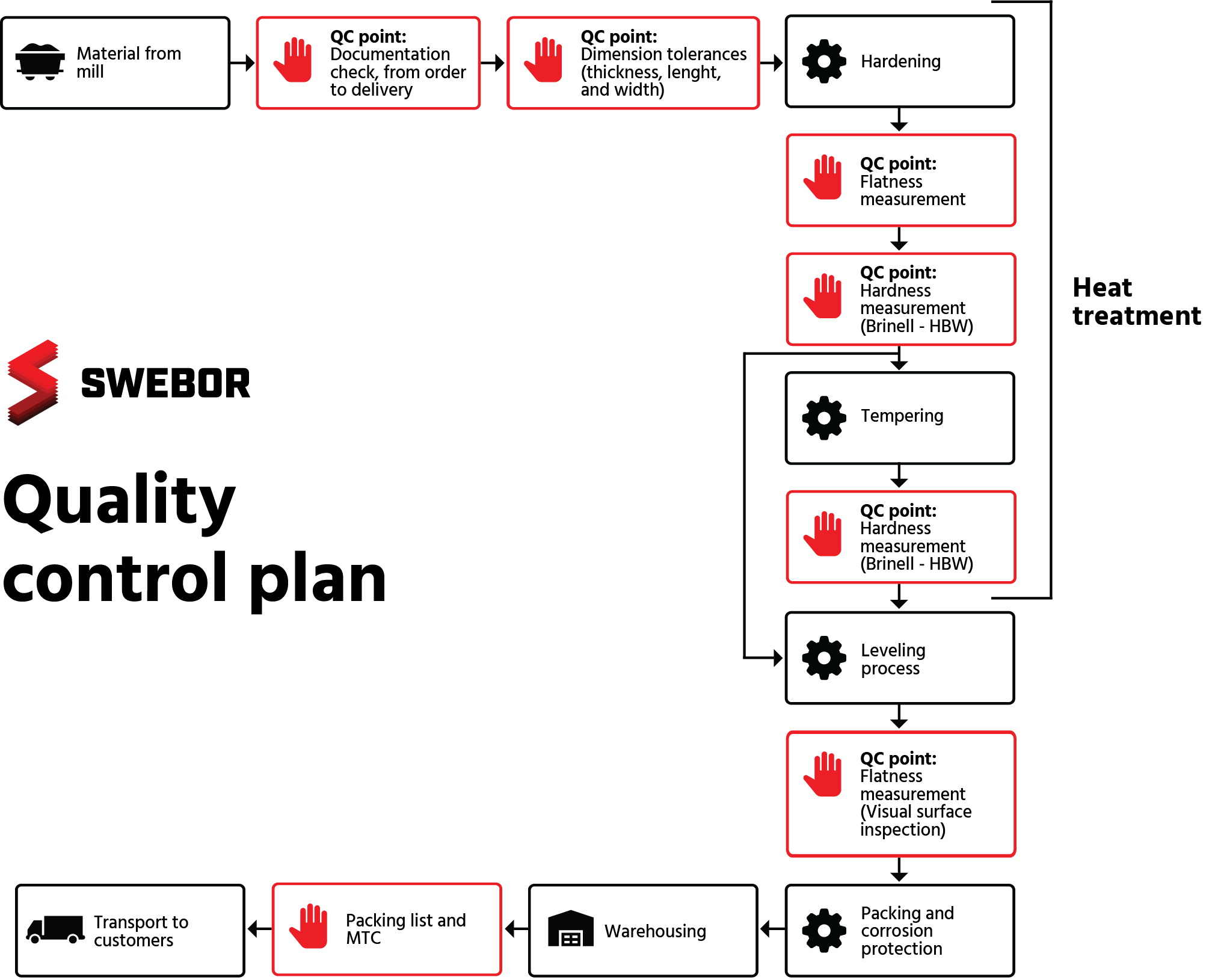Quality Assurance and Quality Control at Swebor
At Swebor, our commitment to quality is as strong as our steel itself. Our customers expect, and deserve, no less.
Throughout our entire production process, our highly experienced and dedicated team follows rigorous Quality Assurance (QA) and Quality Control (QC) procedures. These are crucial parts of our production process.
These procedures are not just crucial to producing the best possible steel products, they also ensure every team member maintains a laser-like focus on quality — whether they are making our Swebor Armor™, Swebor Wear Plates™ or our Edge and Bar Profiles.
What does that look like in practice?
Quality Assurance takes place at operational checkpoints wherever possible throughout the production process, ensuring the correct quantities and qualities of the material. For example, we measure:
- Visual qualities (including dimensional properties, flatness and surface properties)
- Chemical qualities (including chemical properties)
- Mechanical qualities (including hardness, tensile strength and toughness)
- Ballistic qualities (including ballistic resistance).
Production of our quality steel products is divided into processes. These processes are vitally interlinked. We know only too well that the first process influences the second, the second influences the third, and so on.
At Swebor, we understand that the higher the quality achieved during one process, the higher the potential quality we can achieve during the next. It is not enough, for example, for the quenching operator to think solely about his job on the quenching line: the operator must at all times also be thinking about the processes down the line, and how what they do will influence those outcomes.
Example of Quality Control in action
Let’s look at an example of Quality Control in action at Swebor. Let’s say that a customer has ordered a steel product with special flatness tolerances.
On our production line the laser measuring system is placed after the leveling process. But to ensure a quality result, and a product that meets the customer’s requirements, the first quality control check of flatness must be done much earlier in the production process, at the quenching line.
So, it is the responsibility of the quenching line operator to make the setting adjustments needed to create the flattest possible plates, ready for the next process.
Here is a simplified flowchart of our process from start to finish, showing Quality Control checkpoints from the example above. (Note, this is a general flowchart. Specific grades and/or orders might have extra checkpoints to ensure requirements are achieved.) Each check often performed more than once at the various checkpoints.

The information gathered from these checkpoints is shared between operators to ensure the highest possible quality outputs at each stage of the operation. It is this attention to detail that produces the high-end quality products our customers around the globe demand.
At Swebor we are dedicated to quality
It cannot be overstated that Quality Assurance and Quality Control are two of the most important systems a company must have in place in order to achieve the very highest levels of customer satisfaction.
At Swebor, we will always go the extra mile to ensure the reliable quality of all our products.




